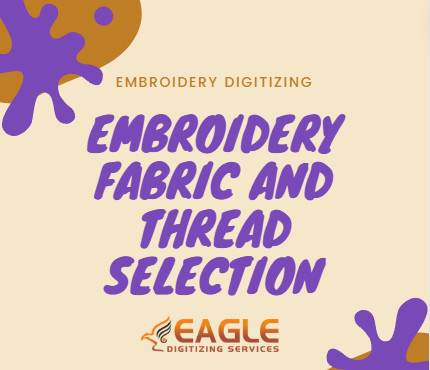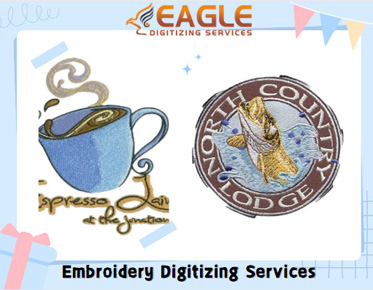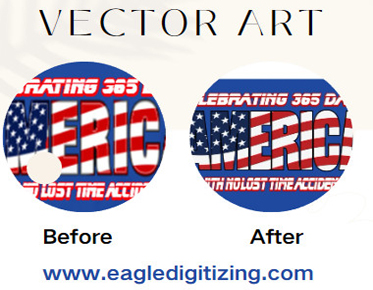What Best Practices for Embroidery Fabric and Thread Selection to Enhance Design Quality?
Have you ever wondered what separates a mediocre embroidery design from a masterpiece? The secret lies in fabric and thread selection. Join us as we unravel the best practices for enhancing the quality of your embroidery designs through thoughtful material choices. In this comprehensive guide, we'll explore the fascinating world of embroidery fabrics and threads, delving into the nuances of each element and uncovering the keys to unlocking your creativity.
Natural
Fabrics
Embroiderers often turn to natural fabrics like cotton, linen, and silk for their timeless appeal and versatility. Cotton, with its soft texture and breathability, is a popular choice for everyday embroidery projects. Linen, known for its durability and distinctive texture, adds a rustic charm to designs. Silk, revered for its luxurious feel and sheen, lends an air of sophistication to embroidered creations.
While natural fabrics offer an unparalleled aesthetic appeal, they may also come with drawbacks such as shrinkage and fading over time. Careful consideration of these factors is essential when selecting natural fabrics for embroidery projects.
Synthetic
Fabrics
Synthetic fabrics, including polyester and rayon, have gained popularity in the world of embroidery for their durability and color retention properties. Polyester threads, known for their strength and resistance to abrasion, are ideal for high-speed embroidery machines. Rayon threads, prized for their lustrous sheen and smooth finish, add a touch of elegance to embroidered designs.
Despite their many advantages, synthetic fabrics may lack the organic feel and breathability of natural fibers. Embroiderers should weigh the benefits and drawbacks of synthetic fabrics carefully before incorporating them into their projects.
Weight
The weight of the fabric plays a crucial role in determining the overall look and feel of an embroidered piece. Heavier fabrics provide stability and support for intricate designs, while lighter fabrics allow for delicate stitching and finer details. For example, a heavier denim fabric may be suitable for bold, densely stitched designs, while a lightweight chiffon fabric may be better suited for delicate floral motifs.
Texture
The texture of the fabric can dramatically influence the appearance of embroidery, adding depth and dimension to the design. Fabrics with pronounced textures, such as corduroy or velvet, can create visual interest and tactile appeal. When selecting fabrics for embroidery, consider how the texture will interact with different stitching techniques and design elements to achieve the desired aesthetic.
Material
Composition
Embroidery threads come in a variety of materials, each with its unique characteristics and effects on the final design. Cotton threads, prized for their natural fibers and matte finish, are suitable for traditional embroidery styles. Polyester threads offer strength and durability, making them ideal for machine embroidery projects. Metallic threads, infused with metallic fibers, add sparkle and shine to embellished designs.
The choice of thread material can significantly impact the appearance and longevity of the embroidery, so it's essential to select threads that complement the chosen fabric and enhance the overall design aesthetic.
Thread
Weight
Thread weight refers to the thickness or diameter of the thread and is denoted by a number. Heavier weight threads, indicated by lower numbers, are thicker and more visible, making them suitable for bold, decorative stitching. Lighter weight threads, indicated by higher numbers, are finer and more delicate, ideal for intricate details and fine lines.
When selecting thread weight for embroidery projects, consider the desired level of detail and the fabric's weight and texture. Experimenting with different thread weights can help achieve the desired balance between visibility and subtlety in the final design.
Color
Fastness
Color fastness refers to the ability of a thread to retain its color and resist fading over time, especially when exposed to washing, light, and other environmental factors. Selecting threads with good color fastness ensures that embroidered designs maintain their vibrancy and integrity even after repeated laundering and exposure to the elements.
To ensure long-lasting color vibrancy in embroidered designs, consider factors such as thread composition, dyeing techniques, and care instructions. Conducting colorfastness tests on sample stitches can help identify threads that meet durability requirements for specific embroidery projects.
Harmonizing
Colors
Harmonizing fabric and thread colors is essential for creating visually appealing embroidery designs. When selecting thread colors, consider the dominant hues and undertones in the fabric to achieve a cohesive color palette. Experiment with different shades and tones to find the perfect match that enhances the overall design appeal.
Techniques such as color blending, shading, and tonal variations can add depth and dimension to embroidery designs, creating visual interest and complexity. Pay attention to color theory principles and experiment with color combinations to achieve harmonious results that captivate the eye.
Considering
Contrast
The contrast between fabric and thread can significantly impact the visibility and clarity of embroidered designs. High-contrast combinations, such as dark threads on light fabrics or vice versa, create bold, eye-catching effects that stand out. Low-contrast combinations, such as similar tones or shades, produce subtle, understated effects that blend seamlessly with the fabric.
When selecting fabric and thread combinations, consider the desired level of contrast and the intended aesthetic effect. Experiment with different contrast levels to find the optimal balance that enhances the visibility and impact of the embroidery design.
Layering
and Dimension
Layering fabrics and threads can add depth and dimension to embroidery designs, creating visually striking effects that command attention. Experiment with different fabric weights, textures, and thread colors to achieve layered effects that enhance the overall visual appeal.
Techniques such as appliqué, trapunto, and raised embroidery can be used to create dimensional elements that pop off the fabric surface. Consider the placement and arrangement of layers to create depth and perspective in the design, adding visual interest and complexity.
Stitch
Density
Stitch density refers to the number of stitches per unit area and plays a crucial role in achieving balanced and aesthetically pleasing embroidery designs. Too few stitches may result in sparse, underwhelming designs, while too many stitches can lead to overcrowded, cluttered designs.
When selecting fabric and thread combinations, consider the desired stitch density and adjust the stitch length and tension accordingly. Experiment with different stitch densities to find the optimal balance that enhances the clarity and definition of the embroidery design.
Washability
Selecting fabrics and threads that can withstand washing and laundering is essential for maintaining the integrity and longevity of embroidered designs. Choose fabrics and threads that are colorfast, shrink-resistant, and durable to ensure that embroidered pieces retain their beauty and vibrancy over time.
Follow care instructions carefully and use gentle laundering techniques to preserve embroidered designs. Avoid harsh chemicals, high temperatures, and abrasive washing methods that can damage delicate fabrics and threads.
Resistance
to Wear and Tear
Considering fabric and thread durability is crucial for ensuring the longevity and durability of embroidered pieces. Choose fabrics and threads that are resistant to wear and tear, especially in high-traffic areas or garments subjected to frequent use.
Strategies for minimizing damage and ensuring the longevity of embroidered pieces include reinforcing stitches, using interfacing or stabilizers, and avoiding excessive tension or pulling on embroidered areas. By taking proactive measures to protect embroidered designs, artisans can ensure that their creations stand the test of time.
Swatch
Testing
Before starting an embroidery project, it's essential to conduct swatch tests to evaluate the compatibility of fabric and thread combinations. Stitch a small sample on a fabric swatch using different thread colors, weights, and stitch types to assess how they interact with each other.
Pay attention to factors such as stitch quality, tension, and fabric puckering to identify any potential issues or challenges. Use the results of swatch testing to make informed decisions and adjustments before proceeding with the final embroidery design.
Stitch
Sampler
Creating a stitch sampler is another valuable technique for testing fabric and thread compatibility and exploring different stitch options and variations. Stitch a variety of stitches, motifs, and patterns on a fabric sampler using different thread colors, weights, and textures to see how they look and feel.
Use the stitch sampler as a reference tool to compare and contrast different stitching techniques and combinations. Analyze the results and make adjustments as needed to achieve the desired effects in the final embroidery design.
Tailoring
Choices to Specific Projects
Customizing fabric and thread selections based on project requirements is essential for achieving the desired aesthetic and functional outcomes. Consider factors such as project size, complexity, and intended use when selecting fabrics and threads.
Experiment with different materials, colors, and techniques to personalize embroidery designs and make them uniquely yours. Tailor fabric and thread choices to suit the specific needs and preferences of each project, whether it's a small-scale artwork or a large-scale installation.
Incorporating
Client Preferences
Integrating client preferences into the fabric and thread selection process is crucial for ensuring customer satisfaction and project success. Consult with clients to understand their vision, style, and preferences regarding fabric and thread choices.
Communicate openly and collaboratively with clients throughout the design process, soliciting feedback and incorporating their input into fabric and thread selections. By involving clients in the decision-making process, you can create personalized embroidery designs that exceed their expectations.
In conclusion, the art of embroidery, expertly guided by Eagle Digitizing, embodies a delicate balance of creativity, craftsmanship, and technical skill. With our comprehensive digitizing services, embroiderers can elevate their designs to new heights. By adhering to best practices in fabric and thread selection, with the assistance of Eagle Digitizing's expertise, embroiderers can enhance the quality, beauty, and longevity of their creations. Whether crafting intricate masterpieces or adding subtle embellishments, thoughtful consideration of fabric and thread choices, with the support of Eagle Digitizing, is paramount for achieving breathtaking embroidery designs that captivate the eye and inspire wonder. So, as you embark on your next embroidery project, trust Eagle Digitizing's guidance and expertise, and let your creativity soar to new heights!



